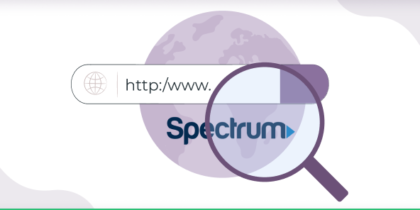Security exploits have become a widespread plague these days, affecting not just the computers or other smart devices but entire networks as well. Amongst the many security exploits carried out by hackers to either siphon valuable information or damage network infrastructures, DNS attacks take the cake.
Domain Name Servers, aka DNS
DNS is the all-important service that allows you to browse your favorite websites or applications. It is because of the DNS that we can easily remember the domain names instead of their numerical IP addresses since it is the DNS service that translates the names of Google.com, Facebook.com, etc. into IP addresses. So, whenever you ask a browser to open up a website, it would first send a translation request (DNS Request) to the DNS server to open the website.
There would be no harm in taking a DNS as an Internet phonebook since it contains all the domain names on the Internet and their respective IP addresses.
Terrifying Potential of DNS Attacks
When we connect our computers or devices to the Internet, a DNS setting is automatically configured on our devices by our ISP’s DNS servers. Such necessity of a DNS server is what makes it the prime target for hackers to spoof or damage an individual device or a network of computers.
The most significant DDoS attack in the history of the Internet was carried out in late 2016, bringing down popular websites that cater to millions of users daily. The attack was carried out using a powerful malicious tool called Mirai Botnet that compromised the DNS servers of Dyn, an accessible DNS product suite.
Scam Websites
There are hundreds of thousands of scam websites that seem like an authentic website. However, the scammer dupes you into thinking they’re legitimate while in reality, they’re only targeting you and exploiting your personal information.
Popular DNS Attacks &Their Prevention
Domain Name Server attacks can be deadly not just for corporate networks but also for regular users. Learning how to prevent DNS attacks is the only way to protect our online privacy and security.
4 Common DNS Attacks
DNS Server Attacks
These attacks are specifically targeted at DNS servers, and the most commonly used method to compromise the server is via DDoS.
The resulting attack not just damages the server itself but also the devices that are connected to it. These attacks are carried out to infect an organization’s network and siphon sensitive information. The attacker may also launch such attacks to damage the infrastructure of the organization as well.
DNS Spoofing/Hijacking/Poisoning
DNS spoofing is known by many names, such as DNS hijacking or DNS cache poisoning. In these attacks, the attacker compromises the cache of a DNS server to hijack it. When the users that are connected to the compromised DNS server try to send a DNS request, they are routed to a malicious website as set by the attacker.
Attackers use these fake websites so they may access the sensitive data of the user, which may include both financially sensitive and personal data.
In 2010, due to the same DNS spoofing attack, internet users in Chile and the US were unable to access certain websites and were instead forwarded to bogus URLs.
DNS Amplification
The amplification attacks are the most common of all DNS attacks. There are many cases you can find on the Internet that are related to the amplification attacks.
These attacks are not aimed at DNS servers but a third-party system. The attacker infects a network of computers with a malicious bot to send a large amount of traffic from all those infected computers to the third system to overload or crash it.
DNS Tunneling
DNS tunneling is a way to use the DNS protocol to send malicious data undetected, which is what makes it not an attack but a precise yet perfect method to bypass high-profile firewalls or any other inspection mechanism.
Ways to Prevent DNS Attacks
- DNS servers should be kept updated and checked regularly to ensure that their security patches are up-to-date.
- The resolver should be kept restricted for external users to prevent cache poisoning.
- The DNS cache should be cleared on both local as well as extensive area networks.
- Installing a reliable firewall is the best way to go when it comes to preventing DDoS attacks.
- Apart from firewall protection, it is also best to host the organization’s architecture on different servers, so if DDoS attacks one server, the other server should immediately take over survive the attack.
- On regular users’ part, the computer or network should be encrypted with a reliable encryption tool to prevent or survive a DNS attack such as a VPN.
Winding Up
The Domain Name Server attacks presented here are just a few amongst the many attacks that cybercriminals use to vandalize an organization’s infrastructure, which ultimately affects regular Internet users.
The preventive tips mentioned above don’t provide 100% safety from a high-profile attack but may offer the right level of security so you may keep browsing the Internet with peace of mind.




[…] DNS hijacking attack prevention starts with you. The first thing you need to do is change your habit of visiting every website that attracts your curiosity. Remember, while the internet is brimming with wonderful things, there is just as much as bad on the internet. Therefore, don’t open every email that sounds tempting, or visit every website you come across. […]